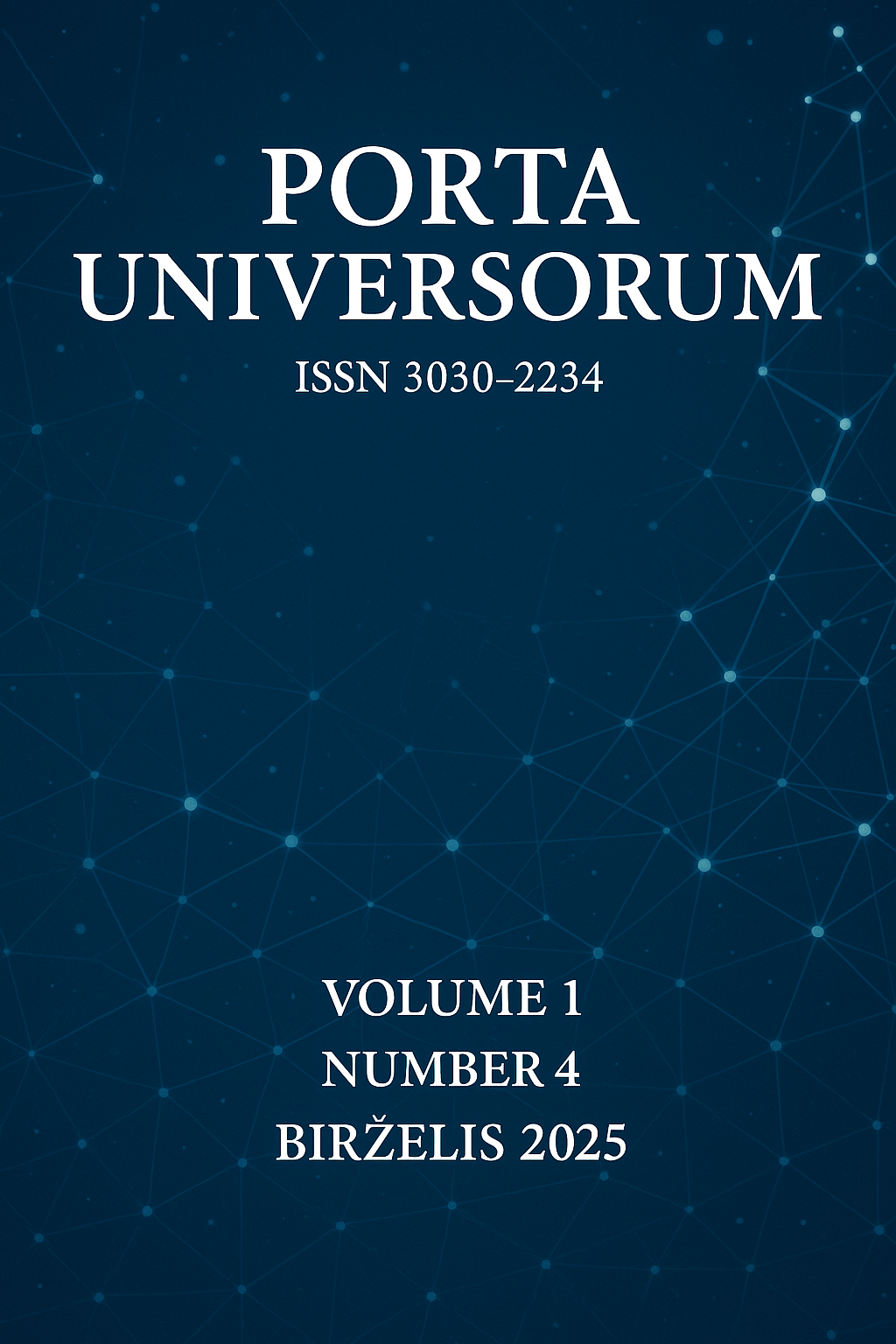Exploring the Modalities of Audiovisual Translation: Focus on Dubbing and Subtitles
##semicolon##
https://doi.org/10.69760/portuni.0104001##semicolon##
Audiovisual translation##common.commaListSeparator## Dubbing##common.commaListSeparator## Subtitling##common.commaListSeparator## English–Azerbaijani translation##common.commaListSeparator## Localization##common.commaListSeparator## Cultural adaptationSantrauka
Audiovisual translation (AVT) has become increasingly crucial in today’s global media landscape, enabling audiences to enjoy films and shows across language barriers. This article investigates two primary AVT modalities – dubbing and subtitling – with a focus on English-to-Azerbaijani translation. The purpose is to compare how each modality operates and to highlight their respective advantages, challenges, and impacts on viewers. The importance of AVT is first underscored by its role in making content accessible worldwide, as seen in the expansion of multilingual streaming services. Dubbing and subtitling are then compared: dubbing replaces the source speech with target-language dialogue, while subtitles display translated text on screen. Key insights from scholarly literature (e.g. Díaz Cintas, Gottlieb, Chaume) are reviewed, covering technical constraints, cultural and linguistic adaptation, and cognitive aspects of viewing. A qualitative methodology is outlined, comparing dubbed and subtitled versions of popular audiovisual products (such as Disney films) in English and Azerbaijani. The analysis examines how dubbing must contend with lip-sync and acting, whereas subtitling faces space and time limitations. Brief conclusions suggest that both modalities offer valuable but different viewer experiences. Dubbing can provide a seamless immersion when done well, and subtitling preserves the original performances; each comes with distinct challenges like idiom translation or synchronisation. The article concludes by reflecting on AVT’s significance and future directions, including the potential of AI-driven dubbing and real-time subtitling to further bridge language gaps.
##submission.citations##
Alisoy, H. A. H. (2023). Object Clauses and Difficulties in Their Translation. Nakhchivan State University, English and Translation Chair.
Alisoy, H., Mammadova, I., Asadova, B., Ismayilli, F., & Aliyeva, T. (2024). The future of language education: Integrating smartphones into the curriculum. Edelweiss Applied Science and Technology, 8(6), 4539-4556.
Antonini, R., & Chiaro, D. (2009). The perception of dubbing by Italian audiences. In J. Díaz Cintas & G. Anderman (Eds.), Audiovisual Translation: Language Transfer on Screen (pp. 97–114). Basingstoke, UK: Palgrave Macmillan.
Babayev, J., & Alaviyya, N. (2023). TRANSLATION PROCEDURES OF CULTURE BOUND-TERMS (CBTs). Journal of Science. Lyon, 48.
Babazade, Y. (2025). Speech Acts and Hidden Meaning: A Journey into Pragmatics. Acta Globalis Humanitatis Et Linguarum, 2(1), 221-228. https://doi.org/10.69760/aghel.02500128
Chaume, F. (2012). Audiovisual Translation: Dubbing. Manchester, UK: St. Jerome Publishing.
Díaz Cintas, J., & Remael, A. (2007). Audiovisual Translation: Subtitling. Manchester, UK: St. Jerome Publishing.
Georgakopoulou, P. (2009). Subtitling for the DVD industry. In J. Díaz Cintas & G. Anderman (Eds.), Audiovisual Translation: Language Transfer on Screen (pp. 21–35). Basingstoke, UK: Palgrave Macmillan.
Gottlieb, H. (1994). Subtitling: Diagonal translation. Perspectives: Studies in Translatology, 2(1), 101–121.
Ivarsson, J., & Carroll, M. (1998). Subtitling. Simrishamn, Sweden: TransEdit.
Javid, B. (2023). Significance of language skills and language aspects in sight translation. Danish scientific journal, 1(77).
Lavaur, J.-M., & Bairstow, D. (2011). Languages on the screen: Is film comprehension related to the viewers’ fluency level and to the language in the subtitles? International Journal of Psychology, 46(6), 455–462.
Luyken, G.-M., Herbst, T., Langham-Brown, J., Reid, H., & Spinhof, H. (1991). Overcoming Language Barriers in Television: Dubbing and Subtitling for the European Audience. Manchester, UK: European Institute for the Media.
Mammadova, I. (2025). Cognitive and Pedagogical Dimensions of Translation: A Theoretical and Practical Exploration. Acta Globalis Humanitatis Et Linguarum, 2(1), 213-220. https://doi.org/10.69760/aghel.02500127
Mirzayev, E. (2025). Pronunciation issues in translation: challenges and implications. Acta Globalis Humanitatis Et Linguarum, 2(3), 41-50. https://doi.org/10.69760/aghel.0250020006
Naghiyeva, G. (2025). Revamping Traditional Methods: Evaluating the Grammar-Translation Method in Modern Language Teaching. Acta Globalis Humanitatis Et Linguarum, 2(1), 88-97. https://doi.org/10.69760/aghel.02500111
Pedersen, J. (2011). Subtitling Norms for Television: An Exploration Focusing on Extralinguistic Cultural References. Amsterdam, Netherlands: John Benjamins.
Perego, E., Del Missier, F., & Bottiroli, S. (2015). Dubbing versus subtitling in young and older adults: Cognitive and evaluative aspects. Perspectives: Studies in Translatology, 23(1), 1–21.
Shahmerdanova, R. (2025). Artificial Intelligence in Translation: Challenges and Opportunities. Acta Globalis Humanitatis Et Linguarum, 2(1), 62-70. https://doi.org/10.69760/aghel.02500108
Tveit, J.-E. (2009). Dubbing versus subtitling: Old battleground revisited. In J. Díaz Cintas & G. Anderman (Eds.), Audiovisual Translation: Language Transfer on Screen (pp. 85–96). Basingstoke, UK: Palgrave Macmillan.
##submission.downloads##
Publikuota
Numeris
Skyrius
##submission.license##
##submission.copyrightStatement##
##submission.license.cc.by-nc4.footer##License Terms
All articles published in Porta Universorum are licensed under the Creative Commons Attribution–NonCommercial 4.0 International License (CC BY-NC 4.0). This license permits:
-
Sharing (copying and redistributing the material in any medium or format),
-
Adapting (remixing, transforming, and building upon the material),
-
for non-commercial purposes only,
-
with proper attribution to the original author(s) and source.
Commercial use of the material is not permitted without prior written permission from the publisher.




